ECW Weekender: Fort McHenry
Fort McHenry is prominently associated with the War of 1812 and rightfully so. The fortification guarded the entrance to Baltimore Harbor and defied the British fleet in September 1814. The defense of Fort McHenry inspired lawyer Francis Scott Key to pen the words to the poem that became a popular patriotic song and, in 1931 the United States National Anthem. However, fifty years after “the rockets’ red glare” burst over the fort, McHenry served a different purpose. The American Civil War repurposed Fort McHenry as an enforcer of loyalty in a lukewarm border state, a prison, and the remembered birthplace of a popular patriotic icon.
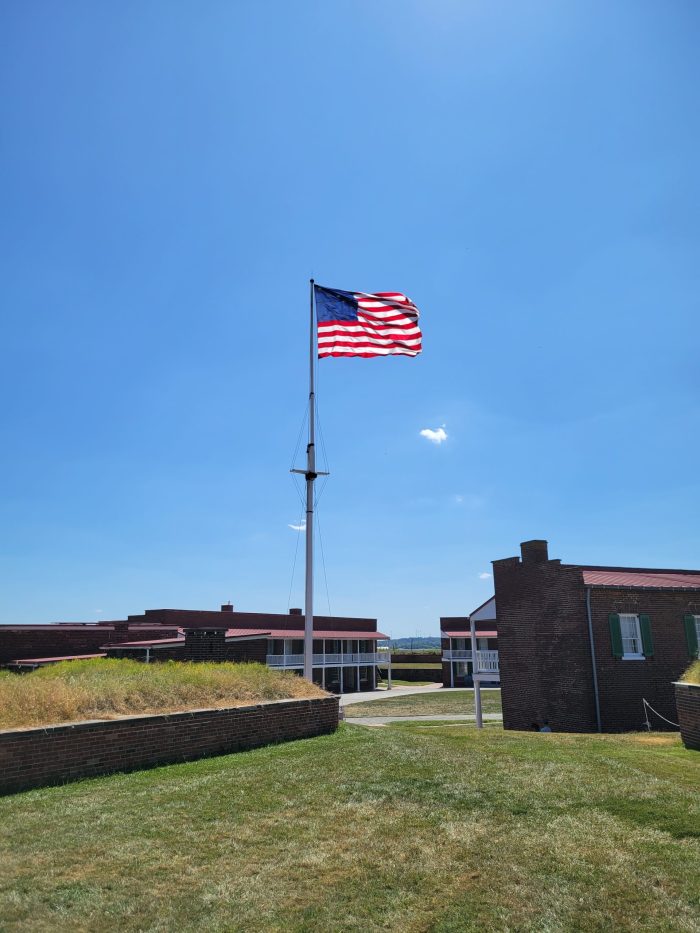
Visiting Fort McHenry offers an opportunity to look closer at both its War of 1812 history and the layers of Civil War stories. While the National Park Service’s interpretation rightfully focus on the events surrounding the defense, there are several displays within the fort and museum that highlight the Civil War years!
Approaching Fort McHenry and looking at the outer fortifications is actually looking at the reinforced earthworks and artillery added during the 1860’s. The massive cannon in the outer works are not from the War of 1812, but rather fort guns cast during the Civil War years. One of the guns was cast in 1863 and weighs 50,140 pounds. Inside the fort, the prison room is interpreted with Civil War history and a panel on the outer ramparts facing Baltimore notes the 1860 uses of the fort.
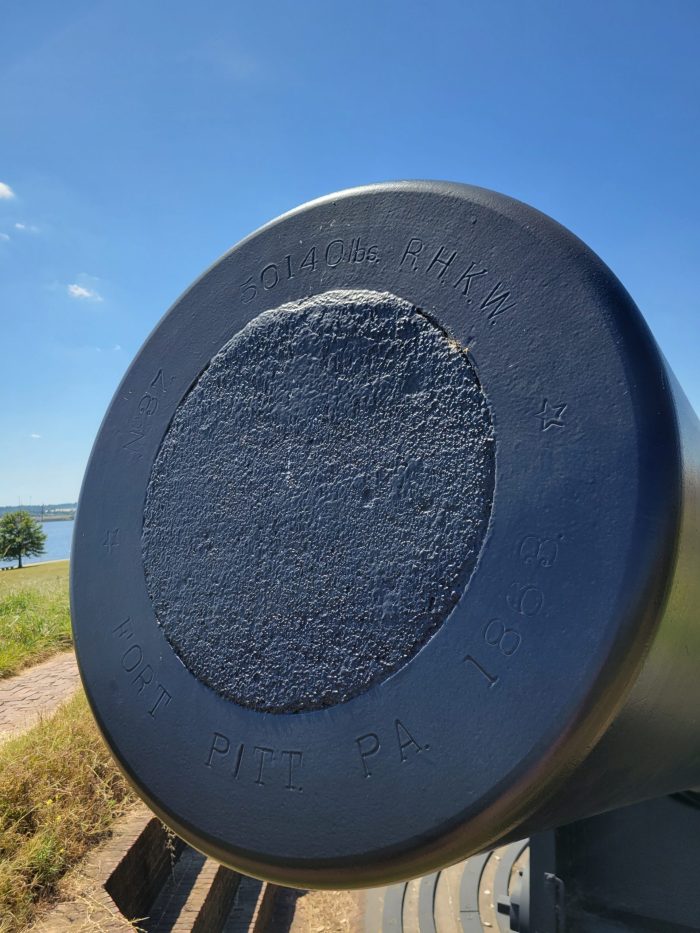

Maryland—a border state—had tenuous loyalty to Union, especially in the early years of the Civil War. Baltimore was a chamber of secession and monopolized the railroad connection to Washington D.C. It was vital to the Union cause that Baltimore did not repeat the rioting of April 1861 or sabotage the railroads. Federally-held Fort McHenry turned its guns from the harbor and aimed them toward the civilian city, a visible warning against insurrection. Southern sympathizers railed against the coercion but limited there outward actions of rebellion.
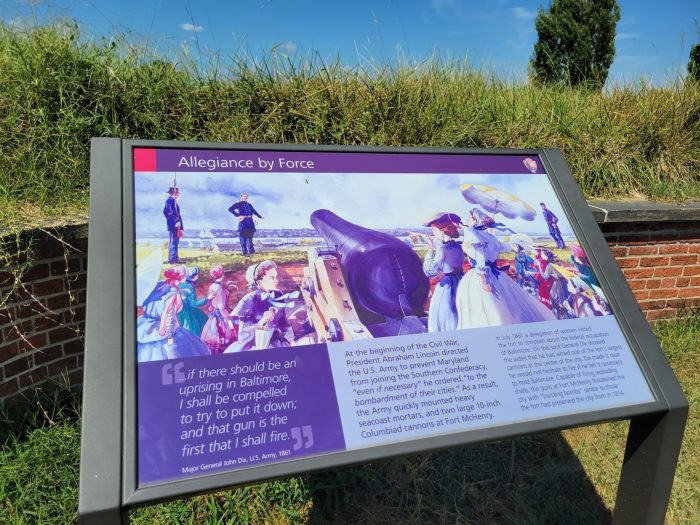
In a controversial move, President Lincoln suspended the Writ of Habeas Corpus—putting Baltimore under Federal control and allowing Southern sympathizers to be imprisoned. Lincoln’s reaction to Baltimore riots provoked strong reactions and continues to be considered and studied. The suspension of habeas corpus allowed for the arrest and imprisonment of Marylanders without warrant or trial as part of the war measures and dealing with the security threat in the border state. Lincoln wrote to a Supreme Court Justice about his choice: “Are all the laws but one, to go unexecuted, and the government itself go to pieces lest that one [habeas corpus] be violated?”
At least 2,0000 political prisoners entered Fort McHenry during the Civil War years. Some were quickly moved further north, but others stayed at this fort for periods of weeks or months. Ironically, Frank Key Howard—a grandson of Francis Scott Key—was imprisoned in Fort McHenry in September 1861 for his passionate and pro-Confederate editorials in a local Baltimore newspapers. He wrote, “The flag which he [Francis Scott Key] had then so proudly hailed, I saw waving, at the same place, over the victims of as vulgar and brutal a despotism as modern times have witness.”
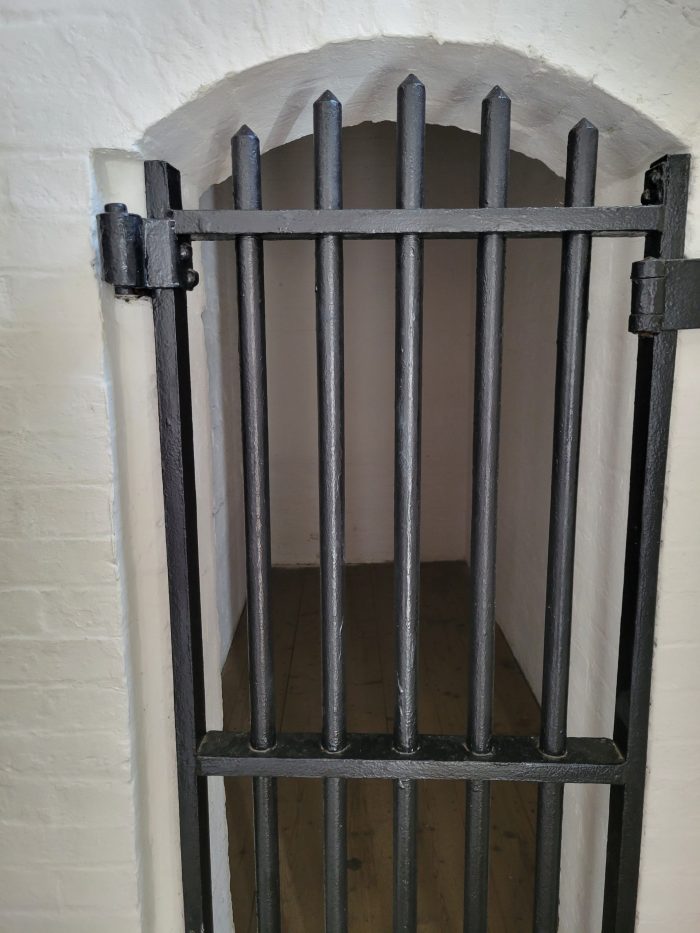
Political prisoners were not the only detainees held under the shadow of McHenry’s ramparts and flag. Confederate prisoners of war arrived in July 1863 after the battle of Gettysburg and were processed into stables-turned-barracks which once stood in the area that is now the visitor center parking lot. Most of these POWs were moved to other more permanent prison camps, like Fort Delaware or Point Lookout.
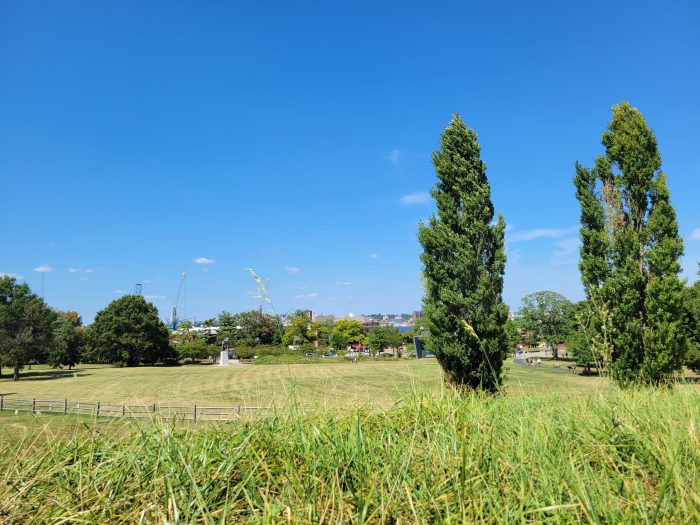
During the Civil War years, many people were keenly aware of the United States past and historical memory loomed as inspiration and justification for both sides. One of the popular symbols-turned-song was “The Star-Spangled Banner”—Key’s poetry set to the tune “Anacreon from Heaven.” While the northerners preferred Key’s original lyrics, southerners made a couple of attempts to rewrite the words. Ultimately, the originals prevailed, along with the Union cause. “The Star-Spangled Banner” – though not the official national anthem during the Civil War years – was played and sung with respect. (For details about the words, meaning, and Civil War influence around “The Star-Spangled Banner,” I suggest the book Oh Say Can You Hear? by Mark Clague for a thought-provoking read.) The actual flag from the defense of Fort McHenry remained stowed during the Civil War years, protected by George Armistead’s descendants and later to gifted to the American public in the early 20th Century.
Strolling the paths along the ramparts or peering into the historic buildings within Fort McHenry, the bright 15-star flag flutters overhead. The Civil War years in Fort McHenry’s history come after the fort’s climactic moment, but in the continuing tension of “what does it mean to be an American?” The idea of national unity was put to the test during the 1860’s and here at Fort McHenry, the strain of political decision, security, and limiting personal liberties were enacted. Visiting Fort McHenry is the opportunity to see and explore a key moment in United States history and memory…a moment that people in the 1860’s knew about even as they guarded the fort, threatened the “rebel nest” of Baltimore, passed through the gates as prisoners, or looked at or sang about a starry banner as a symbol. Fort McHenry symbolizes and embraces interpretation that reminds us that history is not isolated events, but rather connected with through eras of difficulty even as “our flag was still there.”
Fort McHenry National Monument and Historic Shrine
2400 E Fort Ave, Baltimore, MD 21230
https://www.nps.gov/fomc/index.htm
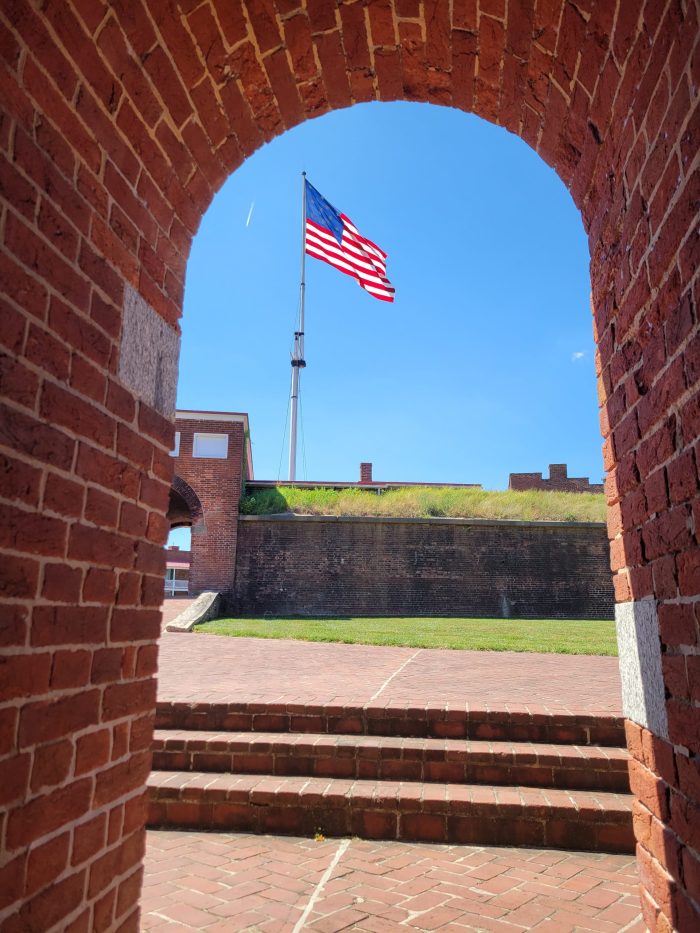

Sarah, I am very impressed that you were able to visit Fort McHenry,I grew up just across the Patapsco River in a community called Brooklyn. (No, not in New York) BTW, if you ventured to the Inner Harbor of Baltimore, just on the south side of the river is a small park called Federal Hill. Atop this hill overlooking the Inner Harbor you will notice some cannons. The guns do not face toward the entrance of the harbor, but are pointed toward the city itself. They were deliberately aiming at the city not to shoot at invading Rebels, but to quell the local citizens who were rabid Southern sympathizers,
I’m glad to see a story on Fort McHenry’s role in the Civil War. But Baltimore was not a “chamber of secession”—many southern sympathizers in the city and state were not necessarily secessionists. They knew that a Union blockade of the port, interdiction of commerce moving west to the Ohio Valley via the B&O Railroad and the C&O Canal, and the long indefensible border with Pennsylvania made a Maryland secession a non-starter. And Lincoln’s suspension of habeas corpus did not lead to arrests and martial law in the spring of 1861. This was a military order, not made public at the time, that applied only to the railway lines, to prevent further sabotage along the tracks and the rail bridges spanning the rivers north of Baltimore. The state legislature, meeting in special session April 26-May 12, took no action toward secession. Plenty of original source documents make this clear. Claims that Maryland remained loyal only under coercion by the federal government persist, part of the broader neo-Confederate Lost Cause narrative that is finally collapsing as historians delve further into original source materials. A guide to original sources related to Maryland can be found in Charles W. Mitchell: Maryland Voices of the Civil War, pp 9-92.
Mr. Mitchell and co-author Jean Baker are the editors of a recent excellent book – The Civil War in Maryland Reconsidered, which I commend to anyone so interested..
Thanks for adding this comment. It seems that perhaps my attempt to simplify made some things unclear. Noted and thank you.
Best,
Sarah
Thank you for the concise insight into a new dimension of the Fort’s history.